The Best Driveway Material for Minnesota
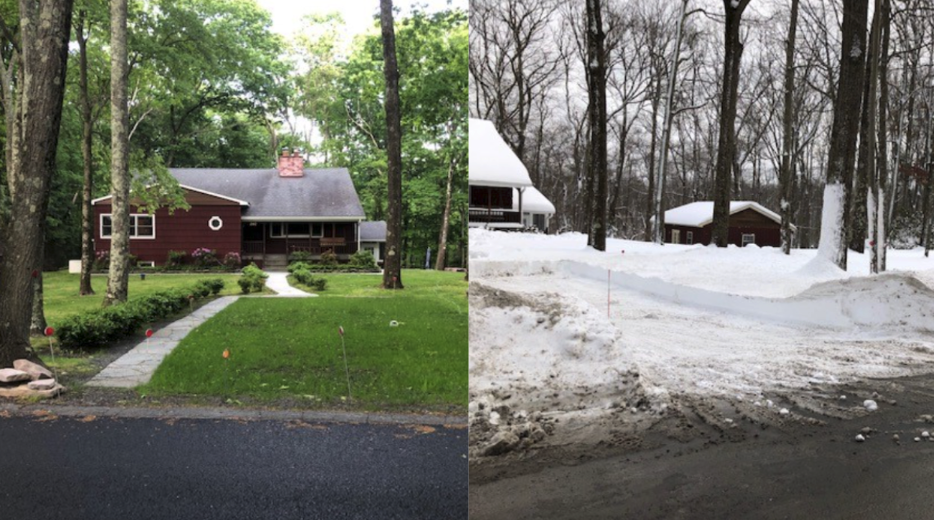
Are you considering upgrading your driveway but unsure which material can withstand Minnesota’s harsh winters and unpredictable weather?
Selecting the right driveway material is absolutely crucial, especially if you live in Minnesota. You also most likely want something that has aesthetic appeal, durability, longevity, and low maintenance requirements. Fortunately, you’re in luck!
In this article, we’ll discuss everything you need to know about driveway requirements in Minnesota and the available driveway materials and help you decide which is best for your Minnesota driveway. Let’s jump in!
Driveway Requirements from Minnesota
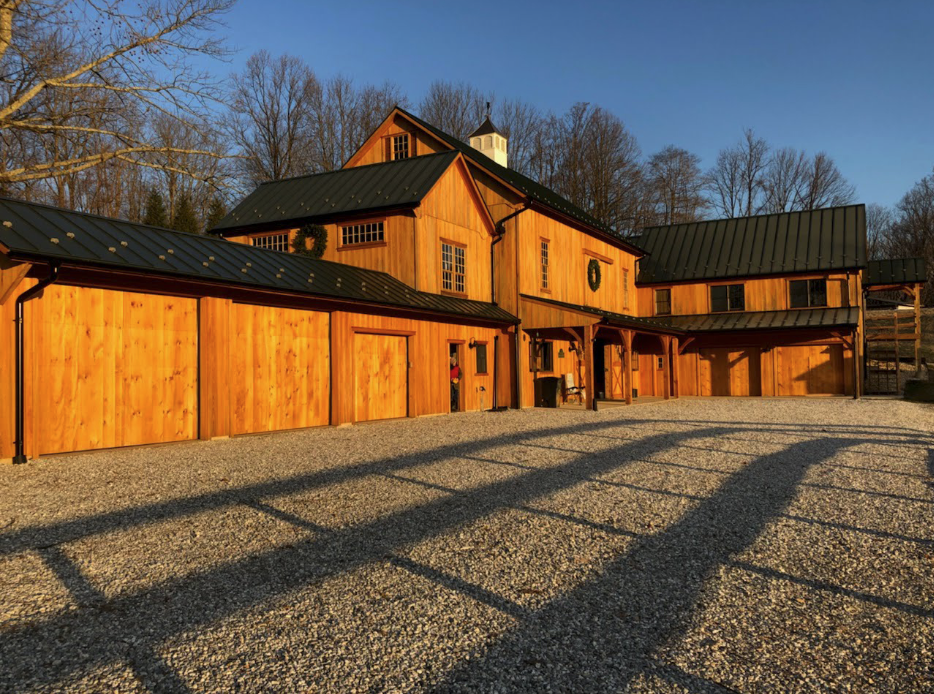
Minnesota’s climate poses unique challenges for driveway materials. The region experiences a wide range of weather conditions, from scorching summers to frigid winters, along with frequent rain and snow. These fluctuations can be tough on driveways, causing them to crack, fade, or sink over time.
Plus, the freeze-thaw cycles common in Minnesota make choosing a driveway material way more important. You must choose a material that can withstand severe temperature changes and expansive subsoils without deteriorating quickly.
The ideal driveway material for Minnesota should also be able to manage rain and melting snow effectively to prevent water from pooling and causing damage. It needs to be strong enough to handle heavy snow removal equipment in the winter and durable enough to withstand the pressure of multiple vehicles year-round.
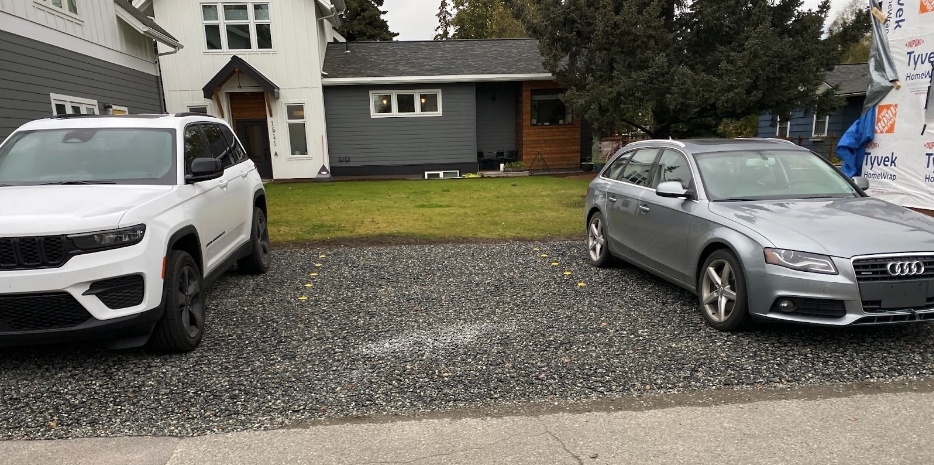
Minnesota Driveway Material Options
Each driveway material available to Minnesota homeowners offers a unique set of benefits and challenges. Here’s how the most popular options stack up under Minnesota’s demanding conditions.
Concrete
Concrete is a popular material choice for driveways due to its clean, modern look and long lifespan. It offers a robust surface that can support heavy vehicles, making it a reliable option for many homeowners.
On the other hand, concrete can last for decades but might crack during Minnesota’s freeze-thaw cycles unless properly installed with the right base and expansion joints. Plus, it requires regular sealing to maintain its appearance and durability, which can be costly.
Asphalt
Asphalt provides a classic blacktop look with an initially lower installation cost than concrete. It’s also particularly adept at hiding stains and spills. Plus, it flexes with temperature changes, making it less likely to crack than concrete.
Unfortunately, asphalt driveways require periodic sealing every three to five years and can degrade under UV radiation. While it is more flexible under thermal stress, asphalt has a shorter lifespan and can soften in hot weather, leading to potential deformities under heavy loads.
Stone Pavers
Stone pavers, including varieties like natural stone and brick, offer a high-end, customizable appearance that adds a distinctive aesthetic appeal to any property. Plus, pavers are extremely durable, can withstand harsh weather conditions, and are easy to replace if damage occurs.
However, the initial cost can be higher than other materials, and poor installation may lead to shifting or sinking pavers over time, which could undermine the functionality and appeal of your driveway.
Permeable Paving
Permeable paving solutions allow water to pass through the surface, reducing runoff and enhancing groundwater recharge. This option excellently manages snow and rain, preventing water from pooling and ice forming on your driveway’s surface.
Permeable pavers require minimal maintenance and are environmentally friendly, reducing the need for stormwater management systems.
Considering Minnesota’s sometimes harsh weather conditions, permeable pavers may be the best driveway material for Minnesota homes. Not only are they functional and durable, as mentioned above, but they’re also stylish and sustainable, which is nothing but a win-win for you.
Deciding Which Material is the Best for Minnesota Driveways
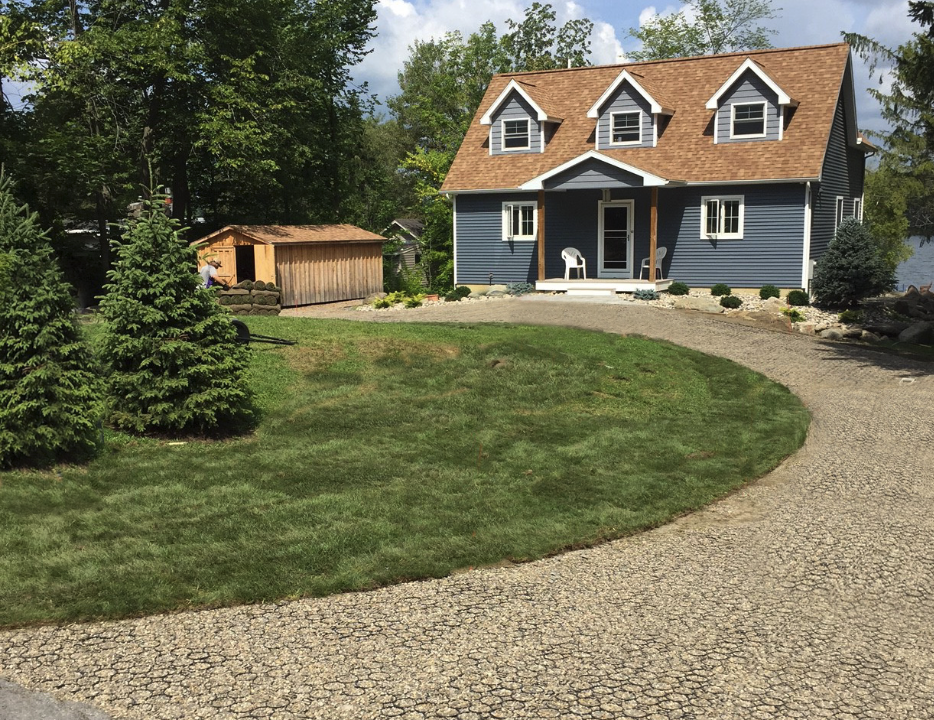
When choosing the best material for Minnesota driveways, you must weigh the benefits and drawbacks of each option. Concrete is a traditional favorite that offers stability, durability, and a sleek appearance. On the other hand, regular maintenance requirements and vulnerability to cracking in extremely cold conditions can make it a less appealing option if you’re looking for lower maintenance solutions.
Asphalt, while more adaptable to temperature fluctuations and easier to repair, suffers from a shorter lifespan and the need for frequent resealing, which may result in higher long-term costs. Alternatively, stone pavers present a high-end, durable option with aesthetic versatility that many property owners appreciate. However, the higher initial cost and potential for shifting or sinking can make them much less affordable.
Permeable paving offers a revolutionary approach with exceptional drainage capabilities and minimal maintenance requirements. Its environmental benefits align perfectly with the growing trend towards sustainable building practices. And it’s the most durable, versatile, and long-lasting option on this list.
The Answer? Permeable Pavers from TRUEGRID
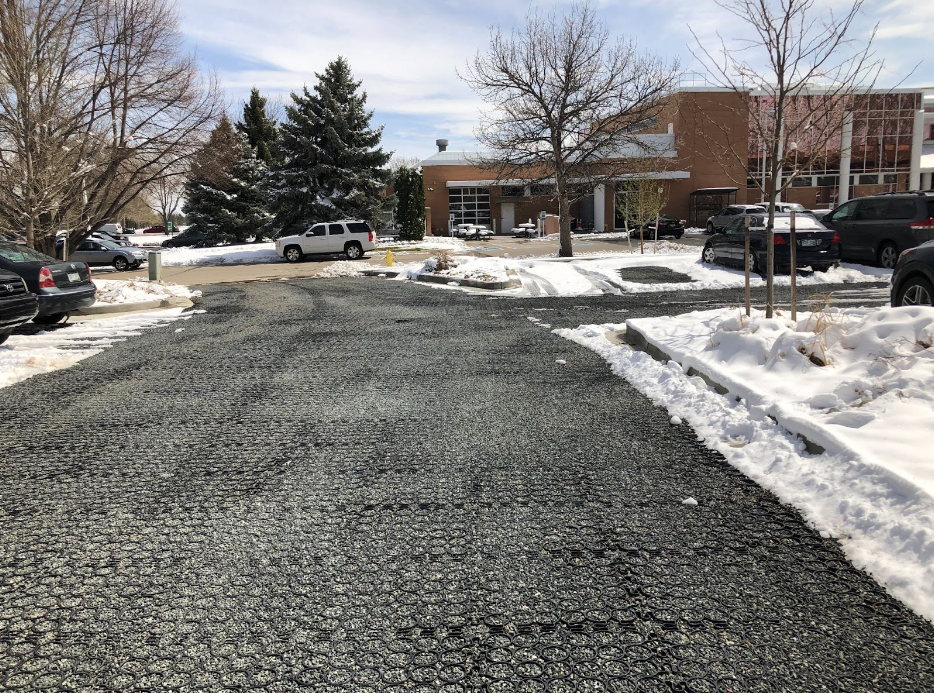
Given the severe weather conditions in Minnesota, which include heavy rainfall, snow, and drastic temperature changes, permeable pavers from TRUEGRID are the obvious choice. TRUEGRID, made from 100% recycled HDPE plastic, has a temperature range from -58F to 198F.
TRUEGRID® PRO LITE and PRO PLUS permeable paver systems manage water runoff and prevent common problems such as pooling and ice. Plus, they’re extremely durable and low maintenance, making them the most cost-effective, long-term driveway solution on the market.
Create the Best Possible Driveway in Minnesota with Permeable Pavers from TrueGrid
To build a driveway that stands the test of time, looks incredible, and handles Minnesota’s weather with ease, consider permeable pavers from TRUEGRID. Our paver systems offer unparalleled performance, durability, function, and sustainability. Contact us to learn more, or get an estimate today!
Have you ever considered a porcelain driveway for your home or commercial property? The material choice for driveways can significantly impact both the aesthetic appeal and functionality of your property, so choosing the right material is incredibly important. If you end up with the wrong driveway material, it could be a costly mistake.
In this article, we’ll delve into porcelain driveways, examining their strengths and weaknesses and whether there’s a better alternative available. Let’s dive in!
Understanding Porcelain Driveways
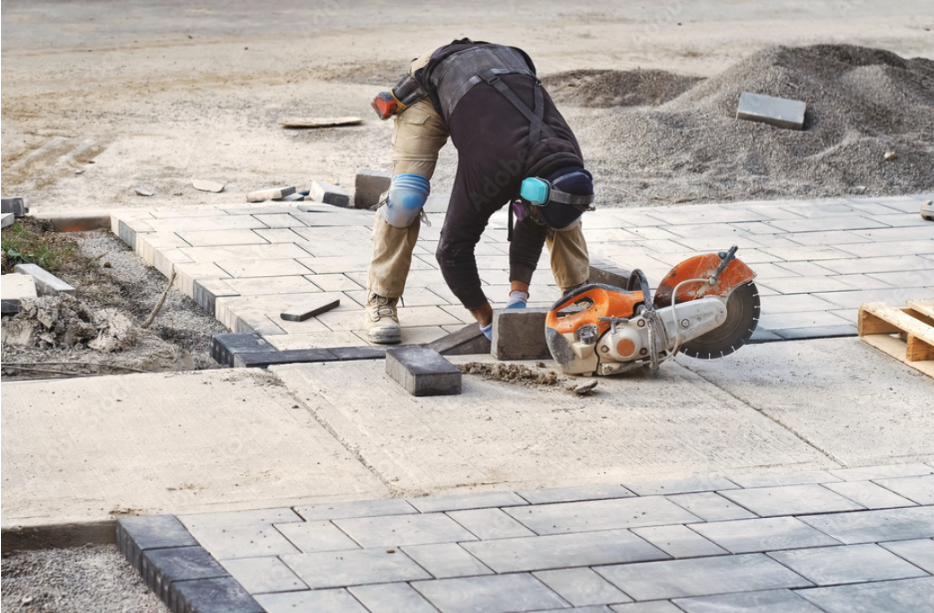
Porcelain driveways are known for their durability and sleek appearance and have become increasingly popular among homeowners in the last few years. Traditionally used in patios and pathways, their application has now expanded to driveways, raising the question: Can you use porcelain tiles on a driveway?
The simple answer is yes, but to understand why, let’s discuss what they are, how they’re made, and how they work.
Porcelain pavers for driveways are made from a refined clay mixture, fired at high temperatures to create a dense and durable tile. This process gives them a distinct advantage in terms of strength and weather resistance compared to standard ceramic tiles. However, it’s important to understand how they perform under the heavy pressures and inclement conditions of modern driveways.
The Advantages of Porcelain Driveways
Porcelain driveway pavers offer a modern and upscale look that can significantly enhance the curb appeal of your property. Their low permeability means they effectively resist stains and water damage, but without a proper drainage system, they can also contribute to water runoff, which can be harmful to the environment.
On the other hand, porcelain paving for driveways comes in a variety of designs and colors, allowing for customization that fits any architectural style. The material’s UV resistance ensures that these vibrant colors do not fade over time, maintaining their aesthetic appeal despite consistent exposure to sunlight.
The Disadvantages of Porcelain Driveways
Despite their aesthetic appeal, porcelain driveways have their downsides. For one, porcelain driveways can crack under the heavy weight of vehicles or due to freeze-thaw cycles in colder climates. And if your porcelain pavers crack, it can be quite expensive to repair.
Second, the high initial cost of porcelain driveway materials and installation can deter many homeowners and developers. If a tile becomes damaged during or post-installation, it’s also expensive and difficult to replace, which ramps up the expense. And if you ever need to replace them, it can be challenging to match colors.
The Need for Better Solutions
While there are many benefits to porcelain driveways, there are just as many disadvantages. That’s why it’s prudent to consider alternatives that might mitigate these recurring issues.
As a homeowner, commercial property owner, or exterior designer, you need an option that is durable, robust, and cost-effective. Fortunately, there is an option available – TrueGrid Permeable Pavers.
Introducing TrueGrid Permeable Pavers

Our permeable paving systems not only address the physical demands of driveways but also contribute to eco-friendly building practices, making it the perfect alternative option to porcelain driveways.
Our innovative permeable paver system provides a stable, durable, and functional grid that can be filled with various materials, such as gravel or grass, depending on the desired aesthetic. Our system’s design promotes effective drainage and reduces runoff, addressing some common environmental concerns associated with traditional paving methods. And it’s specifically engineered to distribute weight evenly, preventing the common issues of cracking and sinking associated with porcelain tiles.
5 Benefits of Permeable Pavers Over Porcelain
Permeable pavers come with a host of benefits that go way beyond the traditional paving materials, including:
1. Enhanced Durability
Our permeable pavers are designed to hold up under heavy loads and harsh weather conditions, making them more durable than traditional porcelain tiles. This durability ensures that the pavers remain functional and visually appealing for years, regardless of the environmental stress they face.
2. Cost-Effectiveness
The minimal maintenance and long lifespan of our permeable pavers offer significant cost savings over time.
3. Environmental Benefits
Our permeable design greatly reduces stormwater runoff, which helps prevent flooding and supports local water ecosystems.
4. Aesthetic Flexibility
The ability to fill our grid systems with various materials, such as gravel in a variety of colors, many grass species, and other specialty fills, allows for extensive customization. This flexibility lets property owners match the aesthetic of their driveway to the overall style of their property, providing both functional and decorative advantages.
5. Reduced Surface Water
The porous nature of our permeable pavers helps manage rainwater more effectively than non-permeable solutions. This reduces the risk of water pooling and runoff, prolonging the life of the driveway and your property by preventing water damage.
Comparing Porcelain Pavers and TRUEGRID Permeable Pavers

When comparing the two, TrueGrid Permeable Pavers offer greater durability, lower long-term costs, and better environmental benefits than porcelain driveway tiles. While porcelain offers a unique, sleek appearance, it falls short in terms of practicality and cost-effectiveness for driveways.
Our adaptable permeable paver system not only withstands the challenges of weight and weather but also provides aesthetic versatility that can adapt to any design vision. This makes our paver system a superior choice for anyone seeking a reliable, economical, and environmentally friendly driveway solution.
Choose Quality with Permeable Pavers from TRUEGRID
While porcelain pavers might offer an attractive finish, their practical applications in driveways can be quite limited. So, if you’re seeking a robust, cost-effective, and environmentally friendly alternative, check out our permeable paver systems for a superior solution.
Contact us today to get started!
Are you thinking about designing a driveway for multiple cars but don’t want it to look cramped or cluttered? Managing space efficiently while ensuring your driveway is aesthetically pleasing requires thoughtful planning and the right materials.
A well-designed driveway not only accommodates multiple vehicles but also enhances the overall curb appeal of your property. Opting for durable materials like concrete pavers or permeable gravel can help define parking areas without making the space feel overcrowded. This approach not only maximizes functionality but also provides a polished, organized look that complements any style of home.
Of course, a beautifully planned driveway deserves vehicles that match its appeal. If you’re looking for a car that’s both timeless and reliable, consider browsing the selection from Billingsley Ford of Ardmore. From classic sedans to rugged trucks, finding the right vehicle there can complete the picture, ensuring your driveway is both stylish and practical.
In this article, we’ll explore some top driveway design ideas that cater to multiple vehicles and discuss the different types of materials available to make your driveway dream a reality.
Understanding Multiple Car Driveway Layouts
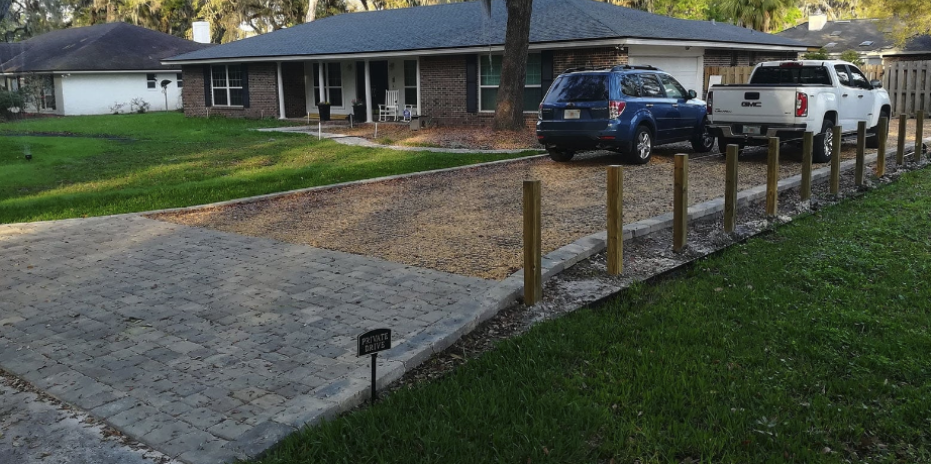
Before we jump into the driveway ideas for multiple cars, let’s take a moment to talk about the different types of multiple-car driveway layouts. Here are your basic options when you’re trying to design a multi-car driveway:
Circular Driveways
Circular driveways not only enhance your property’s curb appeal but also facilitate smooth entry and exit. This layout is ideal for busy households, allowing multiple cars to move in and out without reversing.
Double Driveway
A double driveway has two separate paths, which can make pulling in and out of your driveway super simple for two cars, especially in busy family homes or commercial properties with lots of traffic.
Extended Width Driveways
Simply widening your driveway can make a substantial difference. An extended driveway allows for side-by-side parking, reducing the need for moving cars around to let others out.
Tandem Driveways
For more elongated properties, a tandem driveway could be the right solution. This layout allows cars to park one behind the other, maximizing the use of a narrow space. That said, this is one of the hardest to navigate if people leave at different times.
Choosing the Right Materials for Driveway for Multiple Cars
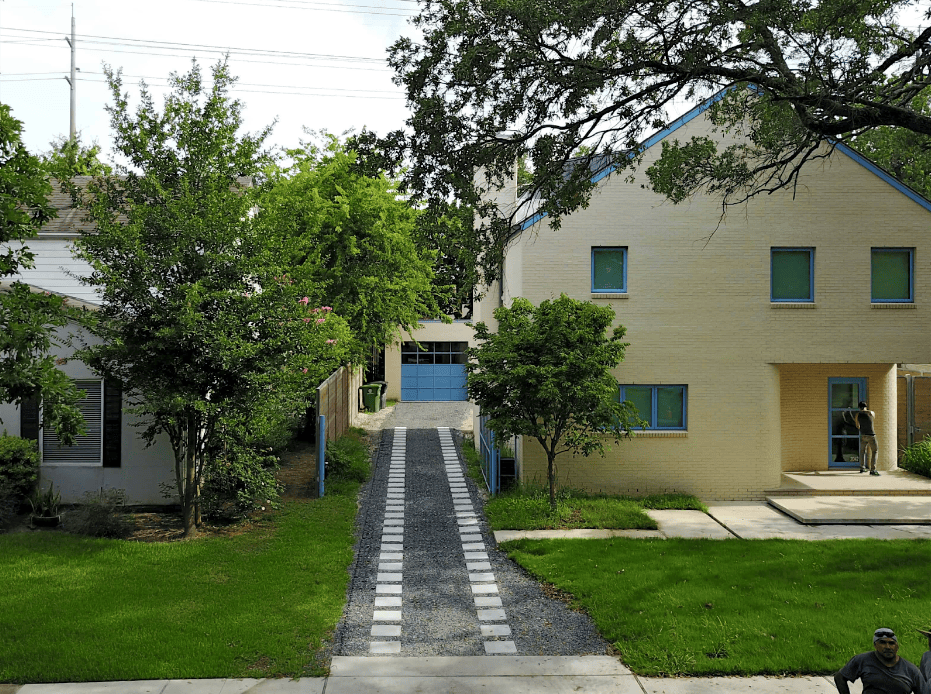
Selecting the right materials is crucial for creating any driveway, especially one that needs to accommodate multiple cars. Here are some of the most common material options for a multiple-car driveway:
Concrete
Known for its durability, concrete is a versatile choice that is super popular among homeowners. However, it can crack over time and may require regular maintenance to keep its appearance.
Asphalt
Asphalt is another popular choice due to its cost-effectiveness and simple installation. Like concrete, it does have its drawbacks, such as susceptibility to weather conditions and needing periodic resurfacing.
Gravel
If you’re looking for a more economical option, gravel can be a good choice. It provides excellent drainage and has a natural look that some people like. However, gravel can shift over time and will require regular maintenance to keep it functional.
Permeable Pavers
As experts in permeable paving solutions, we recommend considering permeable pavers for their aesthetic appeal and practical benefits. They are durable, easy to repair, and cost-effective. Additionally, they offer environmental benefits by allowing water to percolate through, reducing runoff and preventing erosion.
Reinforce Grass for Parking
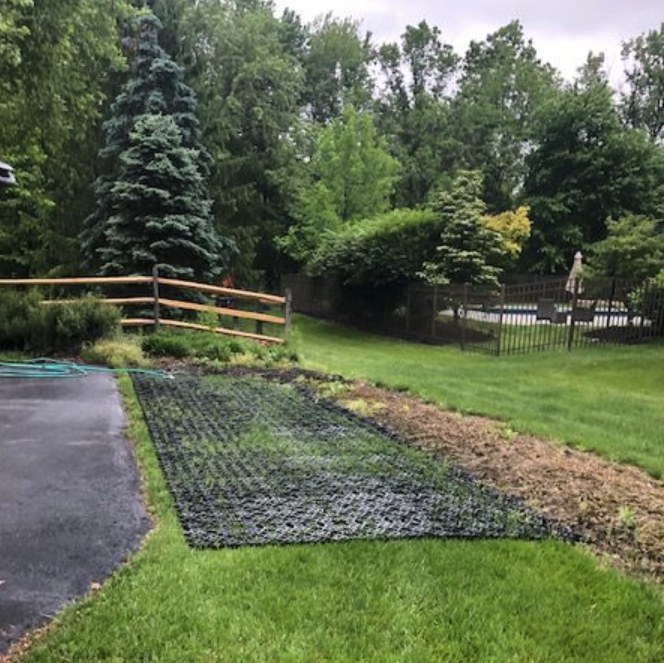
By using TRUEGRID ROOT, you can expand your existing driveway onto the grass you may already have. TRUEGRID ROOT can be placed on turfgrass areas next to asphalt or concrete and can support most residential vehicles for lower use, intermittent parking or driving. ROOT is easy to install and will look just like any other grass surface in just a few weeks after install.
7 Driveway Ideas for Multiple Cars
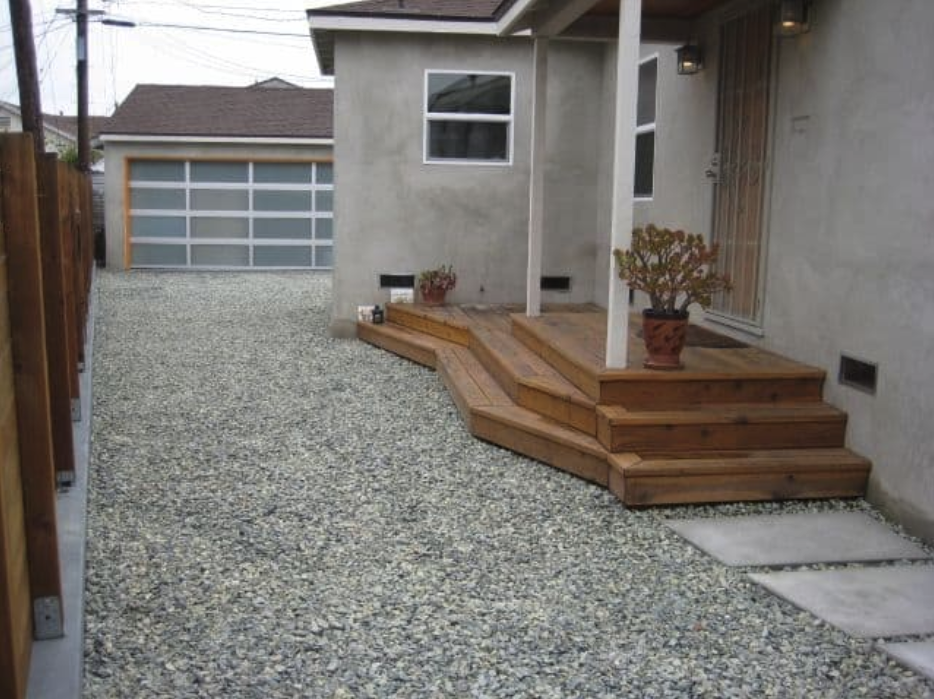
While we’ve spent some time talking about driveway materials and the different layout options for multiple-car driveways, let’s take it a step further. Here are seven different multi-car driveway design ideas to help get your creative juices flowing.
1. Water Drainage Systems
If you want to create a safe place for multiple cars, you need to think about water drainage. Fortunately, you can incorporate permeable pavers to ensure efficient water drainage, keeping your driveway clear even during heavy rains. This system not only prevents water accumulation but also filters pollutants, making it an eco-friendly option for sustainable home design.
2. Good Lighting
Install sufficient lighting to ensure safety and visibility at night. This not only adds to the ambiance and security of your property but also enables people to pull in and out without having to worry about limited visibility.
3. Accessible Walking Paths
Design paths for people to walk that are clearly marked and safe, separating them from the areas used by vehicles. This ensures that everyone can move safely around your property without navigating parked cars.
4. Eye-Catching Landscaping
Use landscaping to enhance the visual appeal of your driveway. Consider border plants, shrubs, or seasonal flowers that complement the overall design. Thoughtful landscaping can turn a functional space into a lush, inviting entryway that boosts your property’s curb appeal.
5. Smart Technology
Implement smart technology solutions like automated gates and security cameras for enhanced convenience and safety. These systems can be integrated with mobile apps to allow you easy control over access and monitoring directly from your phone.
6. Unique Designs
You can enhance your driveway layout with unique paving patterns or decorative elements to make a striking first impression on guests. This option offers both practical and aesthetic benefits, so it’s a win-win design idea!
7. Overhead Coverage and Weather Protection
Consider adding a carport or pergola over part of the driveway to protect vehicles from the elements and add a stylish architectural element to your home. This could increase the usability of your driveway regardless of weather conditions.
Enhance Your Multiple Car Driveway with Pavers from Truegrid
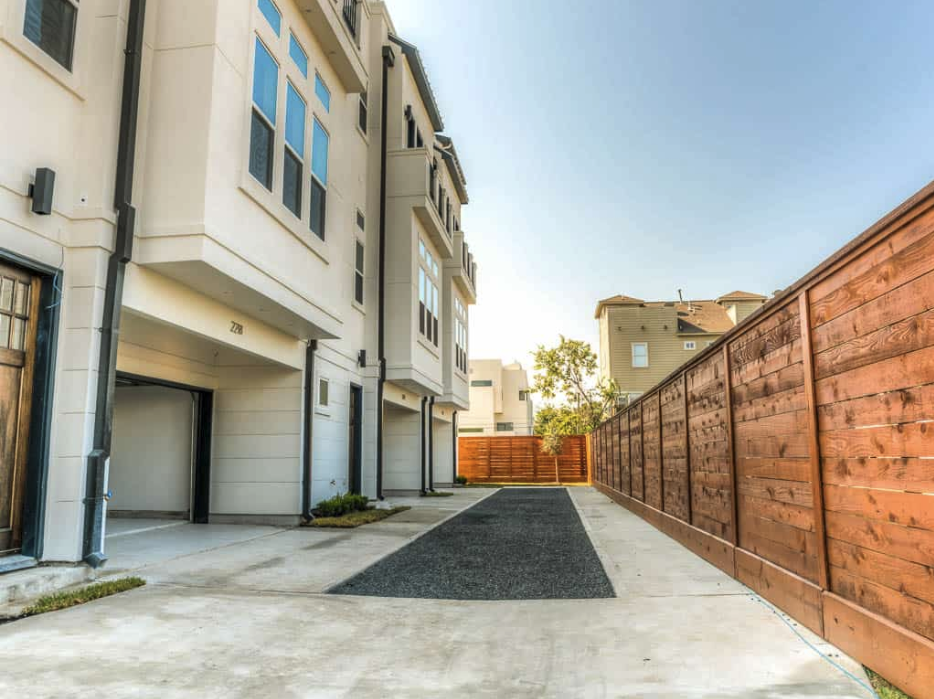
With the right design and materials, your multiple-car driveway can serve as a functional, durable, and aesthetically pleasing entrance to your property.
At TRUEGRID, we offer innovative paving solutions that can be used to create driveway ideas for multiple cars that are both durable and beautiful.
Ready to transform your driveway? Get an estimate today, or contact us to learn more!
Are you looking to design or renovate a community center and need innovative, cost-effective ideas for the parking and exterior design?
In this article, we’re going to discuss various design elements that can enhance the aesthetics of your space while simultaneously prioritizing environmental sustainability, accessibility, function, and more! Let’s get started!
Community Center Designs to Inspire Your Next Renovation
Designing a community center presents a ton of unique challenges and opportunities. But by focusing on multifunctional and sustainable design elements, you can maximize your space. Here are some unique community center design ideas to inspire your renovation.
Green Parking Solutions
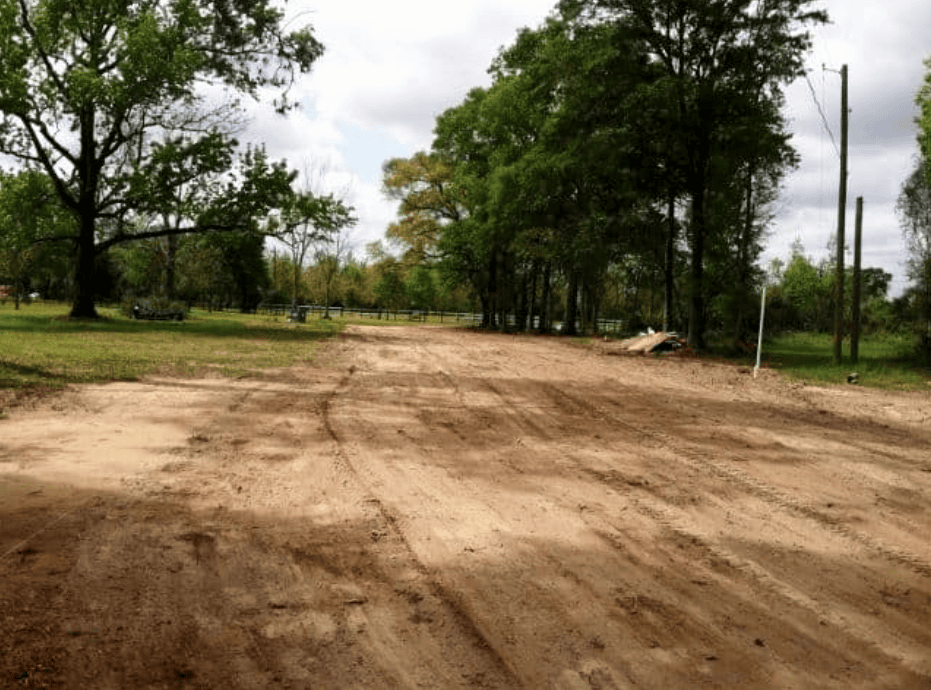
One of the best ways to improve the design of your community center is to focus on your parking areas. Green parking solutions have the added benefits of being super functional and sustainable, which make them a perfect choice for any community.
1. Grass Parking Areas
Grass parking areas are a visually appealing and environmentally friendly alternative to traditional pavement. By using TRUEGRID PRO PLUS you can maintain the green look while ensuring the area is durable and usable year-round. For this type of installation, proper soil preparation and choosing the right type of grass are crucial for enhancing the site’s environmental benefits, but once you have the right mix, it’s a perfect solution.
2. Permeable Pavers
Permeable pavers are key to sustainable community center designs, especially in parking areas. These pavers allow rainwater to seep through and get absorbed into the ground. This reduces the risk of water retention and flooding, which can help in more ways than one.
TRUEGRID offers a range of permeable paving solutions that are not only highly effective but also aesthetically pleasing. Plus, they create the ideal parking lot because they’re easy to drive on, don’t require constant maintenance like gravel parking lots, and are super sustainable.
TRUEGRID PRO PLUS with Gravel Infill can be used for unlimited traffic volumes and PRO PLUS with grass infill can be used for low traffic volumes.
Drainage Systems
Speaking of parking solutions with drainage systems, if you want to create a safe environment in your community center, you have to worry about excess rainfall. That’s why we recommend permeable pavers. But if you’re looking for other solutions, you might try these.
3. French Drains and Trench Drains
French drains or trench drains into your community center design to manage excess water efficiently. These solutions can easily be integrated into the landscape, ensuring effective water management without compromising on style.
4. Rain Gardens
Rain gardens in parking lot islands are perfect for enhancing water absorption and adding visual interest to your community center design. Selecting the right plants and designing the layout thoughtfully can significantly improve your community center’s drainage while making the space look beautiful. Both of these solutions work well with permeable pavers.
Accessibility
If you’re going to design a community center, it needs to be accessible. So, here are a couple of small community center design ideas to make your space more accessible to the community.
6. ADA-Compliant Parking Design
It’s essential to design your parking areas to be ADA-compliant, with adequately sized and marked accessible parking spots. You should make sure these spots are strategically placed close to the community center entrance for easy access.
7. Smooth Transitions
For any visitor or community member using wheelchairs or other mobility aids, smooth transitions are absolutely vital. Use materials that provide a firm, stable, and slip-resistant surface to prevent any gaps or bumps, and you’ll make your community center much more accessible.
Special Lighting and Safety Features
If your community center is open after dark or before sunrise, you should take the time to make sure you have adequate lighting and features that promote the safety and overall well-being of your community members.
8. Solar-Powered Lighting
Incorporate solar-powered lighting to ensure your parking areas are well-lit while keeping energy costs low. Strategic placement of lights can enhance both the usability and safety of the area after dark.
9. Security Cameras and Emergency Stations
If you want people to feel safe at your community center, you should install surveillance cameras and emergency stations to boost security. Design the layout to maximize visibility and prevent potential security breaches.
Fun Landscaping
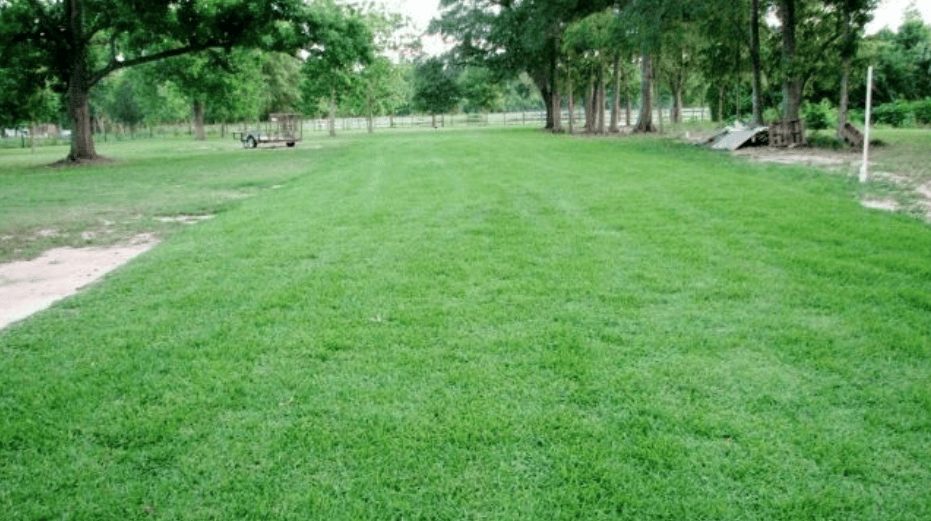
If you want to take your community center exterior design to the next level, why not try some fun landscaping ideas?
10. Shade Trees and Canopy Coverage
Planting shade trees strategically can offer natural cooling and contribute to the aesthetic appeal of your community center’s exterior. Choose species that provide year-round benefits, and you can have shade trees all year.
11. Decorative Barriers and Fencing
Install decorative barriers and fencing to give your community center new life. This has the bonus benefit of adding extra security features to your community center design, which is a win-win!
Signage and Directions
Another wise design option for community centers is clear signage and directions. Especially if you have a large community center, you want people to be able to find their way around. Here are some excellent design options for signage.
12. Eco-Friendly Signage
Choose signage made from sustainable materials that are durable and visually appealing. Remember to ensure the directions on the signage are clear and understandable to everyone, including those with disabilities.
13. Smart Parking Technology
Implement smart parking technologies that use apps and sensors to indicate available spots, reducing congestion and enhancing your visitor experience. This can also help keep your community center parking area organized and easy to use.
Improve Your Community Center Design Ideas with Pavers from Truegrid
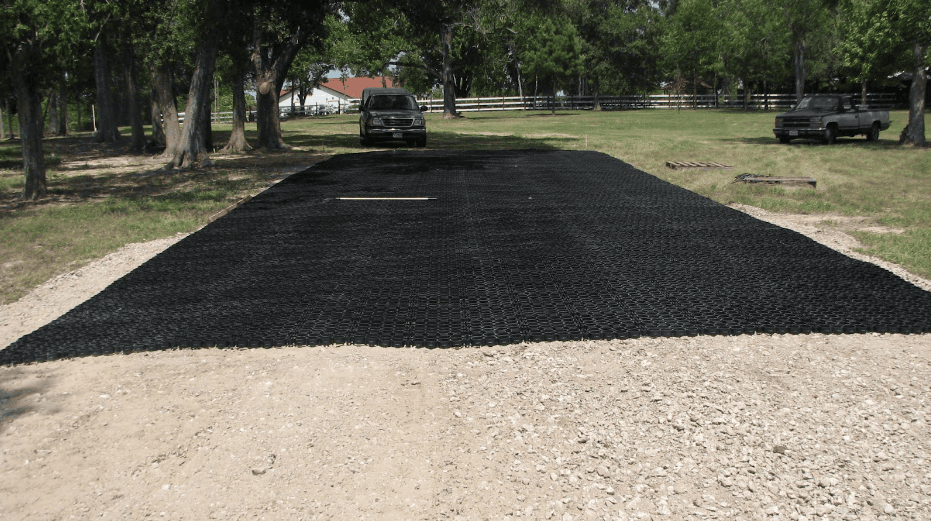
Enhance the functionality and aesthetic of your community center’s exterior with TrueGrid’s innovative paving solutions. With permeable paver systems that reduce water runoff and boost accessibility and safety, we have the technology and expertise to help you transform your space.
Get an estimate today to get started!
Have you ever wondered why parking lot discussions become a hot topic at school board meetings? It’s more than just heated discussions about time, money, and asphalt.
Let’s dive into the parking requirements for schools to see how to make an efficient, accessible, and safe school parking lot.
How Much Parking Do Schools Really Need?

The size and availability of parking spaces at schools directly impact the daily lives of students, staff, and visitors.
Adequate parking ensures that everyone’s day starts off right by avoiding unnecessary stress from searching for a spot. Inadequate parking can cause tardiness, which could result in disciplinary action for students and staff members. Plus, when schools host events like sports games and parent-teacher conferences, those parking lots might require extra space or additional members to facilitate traffic.
In fact, a good parking lot doesn’t just meet the parking requirements for schools but also goes beyond convenience, which is why schools need well-designed, safe parking lots to accommodate all vehicles while ensuring smooth traffic flow.
This balance prevents congestion, reduces the risk of accidents, and ensures quick access to emergency vehicles.
6 Parking Requirements for School Parking Lots

What are the parking requirements for schools? Here are 6 considerations all schools must make when designing their parking lot:
1. Enough Parking Spaces
Ensuring sufficient parking spaces is fundamental. Schools must cater to the needs of teachers, students, and visitors, with additional capacity for special events.
Underestimating this need can lead to off-site parking issues and neighborhood congestion that results in unnecessary tardiness and undeserved disciplinary action.
2. Access Aisles
Access aisles are vital for a seamless flow of traffic within the parking lot. They facilitate smooth entry and exit from parking spaces by reducing bottlenecks and improving safety. Properly designed aisles can also accommodate emergency and maintenance vehicles for comprehensive accessibility.
3. Space Size Requirements
Parking space sizes are also a crucial component of the parking requirements for schools. Car-accessible spaces need a width of at least 96 inches and an access aisle of 60 inches. These spaces should have a gentle slope, a firm, slip-resistant surface, and clear signage.
Van accessible spaces, offering wider or additional access aisles and higher clearance, must adhere to similar standards. These accommodations ensure inclusivity and compliance with accessibility laws, which ultimately help make school parking lots safer and more accessible.
4. Accessible Parking
Accessible parking, sometimes called disabled parking, is not just a requirement;it is a legal requirement for all parking lots, including the parking requirements for schools.
These spaces must be strategically located to offer the shortest route to the building entrance so that individuals with disabilities have equal access to school facilities.
5. Affordability
Cost-effectiveness plays a crucial role in selecting parking solutions, especially when it comes to public school systems. Schools on a shoestring budget must find a balance between initial installation costs and long-term maintenance. Affordable parking solutions can free up funds for other educational purposes.
6. Parking Blocks
Parking blocks are essential for organizing spaces and ensuring vehicles park correctly. They also play a role in pedestrian safety by marking clear walking paths separate from driving lanes.
The Best Materials to Meet Parking Requirements for Schools
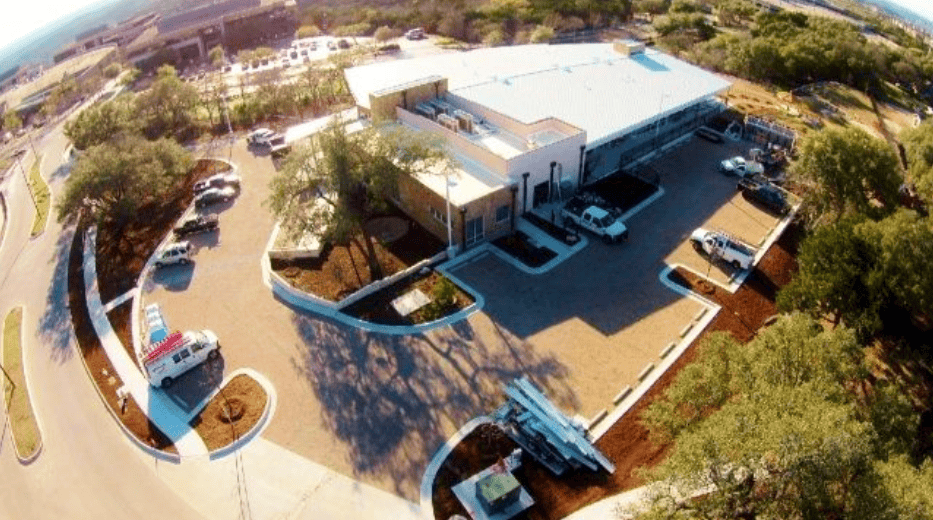
Selecting the right material is key to a functional and durable parking lot that meets the parking requirements.
But with so many materials available, how are schools supposed to choose the right one? Let’s break it down:
Concrete
Concrete is a super popular parking lot material option. It’s incredibly durable but can be expensive and prone to cracking over time. It requires significant maintenance to address wear and tear from heavy usage, so it might not be the best option available for school parking lots.
Asphalt
Asphalt offers a smoother surface but heats up quickly and can deteriorate under extreme weather conditions. Regular maintenance is also needed to fill cracks and reseal the surface. So, while this is another popular option, it might not be the best option for school parking lots.
Loose Gravel
Loose gravel is affordable but not the safest choice. It can shift to create uneven surfaces and pose tripping hazards. It’s also challenging for snow removal and can clog storm drains. If you’re looking at material options for school parking lots, this should be the last option on your list.
Permeable Pavers
Permeable pavers are an eco-friendly and durable material option that is absolutely perfect to help schools meet parking requirements. Here are a few key benefits that make permeable paver systems better than the rest:
Reduced Runoff
Parking minimums can impact stormwater runoff by creating more impermeable surfaces. Permeable paving can be used to meet the parking minimum without affecting the impervious cover limits.
Combined Use
Permeable paving can be used as an underground stormwater detention and drainage system as well as a surface for parking. By combining these functions, the school and community can reduce land use, safe space, and safe money.
Eco-Friendly
Permeable pavers allow rainwater to filter through the ground beneath the parking lot, reducing the amount of runoff that would otherwise flow into and pollute local waterways.
Reduces Urban Heat Island Effect
Traditional asphalt and concrete surfaces absorb and retain heat which contributes to higher temperatures in urban areas. Permeable pavers, on the other hand, have a lighter color and less heat absorption, which helps reduce the urban heat island effect.
Durability and Strength
Designed to withstand heavy loads, permeable pavers are highly durable. They can support the weight of many types of vehicles which makes them suitable for high-traffic areas such as school parking lots. The interlocking design disperses the load evenly to significantly reduce the likelihood of cracks and potholes.
Low Maintenance
Unlike asphalt or concrete surfaces that require regular sealing and repairs, permeable pavers require minimal maintenance.
Improved Safety
The porous nature of permeable pavers ensures quick rainwater drainage to reduce puddles and slippery surfaces. Additionally, with all the stormwater detention safely done within the permeable paving cross-section, this can eliminate the need for dangerous, open detention ponds that can be hazardous to human health and can be a potential hazard.
LEED Certification
Schools aiming for sustainability and green building certifications, such as LEED (Leadership in Energy and Environmental Design), can earn points by utilizing permeable pavers.
Meet Parking Requirements for Schools with Permeable Pavers
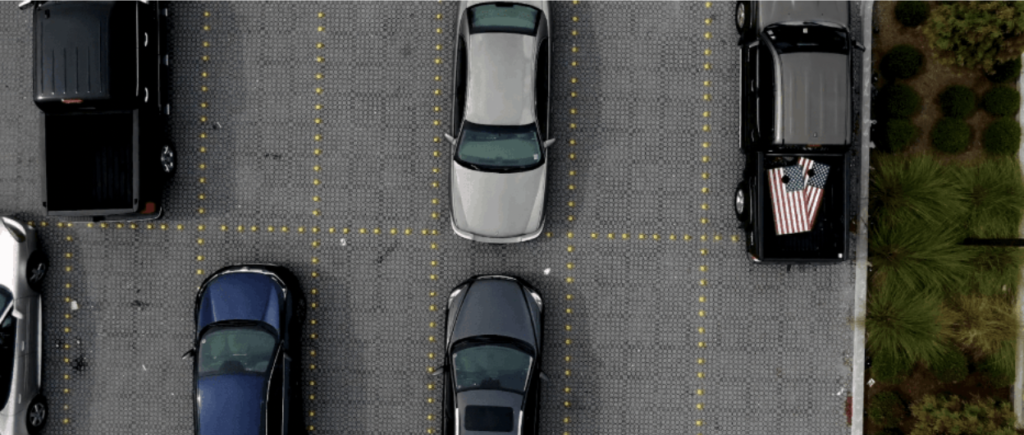
Choosing permeable pavers for a school parking lot isn’t just an upgrade, it’s a long-term investment in safety, sustainability, and functionality.
TRUEGRID® Permeable Pavers are a solution that ticks all the boxes when it comes to the parking requirements for schools. TRUEGRID can handle all of the functions of stormwater detention and parking surfacing, all in one. Their durability, affordability, and eco-friendliness make them the best choice for any educational institution looking to improve its infrastructure.
Ready to transform your school’s parking lot? Contact our team today!
Are you considering building a commercial motorcycle parking lot and aren’t sure how to start the design process?
Keep reading this article to learn everything you need to know about bike park design, including some common issues, material choices, and motorcycle parking design guidelines.
Common Issues with Commercial Bike Parking Lot Designs

When it comes to commercial motorcycle parking lots, there are several common issues that can compromise safety and convenience for cyclists and motorcyclists.
Understanding these challenges is crucial for creating solutions to enhance your parking lot. Here are the 5 most common issues faced by bike parking lots:
1. Loose Gravel
Loose gravel might seem harmless, but for bikers, it’s a slippery slope to disaster. The instability it creates under tires can lead to loss of control, especially during maneuvers like braking or turning. Ensuring a firm, stable surface is crucial to prevent mishaps and instill confidence in bikers using your lot.
2. Oil and Grease Buildup
Oil and grease buildup is not just an eyesore but a significant safety hazard. These slippery substances compromise traction that increases the risk of skidding and falling. Regular maintenance to remove such contaminants is essential for maintaining a safe parking environment unless you choose a parking lot material with proper drainage.
3. Accessibility
Accessibility issues in motorcycle parking lots can deter bikers from choosing sustainable transportation options. Limited space or inconvenient layouts can make it challenging to park, which might discourage bikers from using your lot altogether. Designing with accessibility in mind helps you remain inclusive and encourages more people to embrace biking.
4. Traditional Materials

Traditional materials like concrete or asphalt may seem sturdy but have some serious drawbacks. Not only are they prone to cracks and potholes, but they also contribute to stormwater runoff and environmental degradation.
Opting for eco-friendly alternatives like TRUEGRID® Permeable Pavers can enhance the durability of your lot and reduce its environmental impact.
5. Inclement Weather
Rain or shine, motorcycles need a reliable parking space. However, traditional surfaces often become slippery when wet, which can pose a danger to bikers. Designing with weather-resistant materials and proper drainage systems ensures that parking lots remain safe and accessible regardless of the weather conditions.
What is the Best Material for Motorcycles Parking Designs?

When considering materials for your motorcycle parking lot, it’s essential to weigh the pros and cons of each option. Traditional choices like concrete and asphalt might be super common, but they come with their fair share of drawbacks.
Concrete may be durable, but it also contributes to stormwater runoff and heat island effects. Asphalt, on the other hand, is prone to cracking and requires frequent maintenance. The other common alternative, loose gravel, is way too dangerous for bikers, no matter the weather conditions.
A Better Option for Motorcycle Park Designs: Permeable Pavers
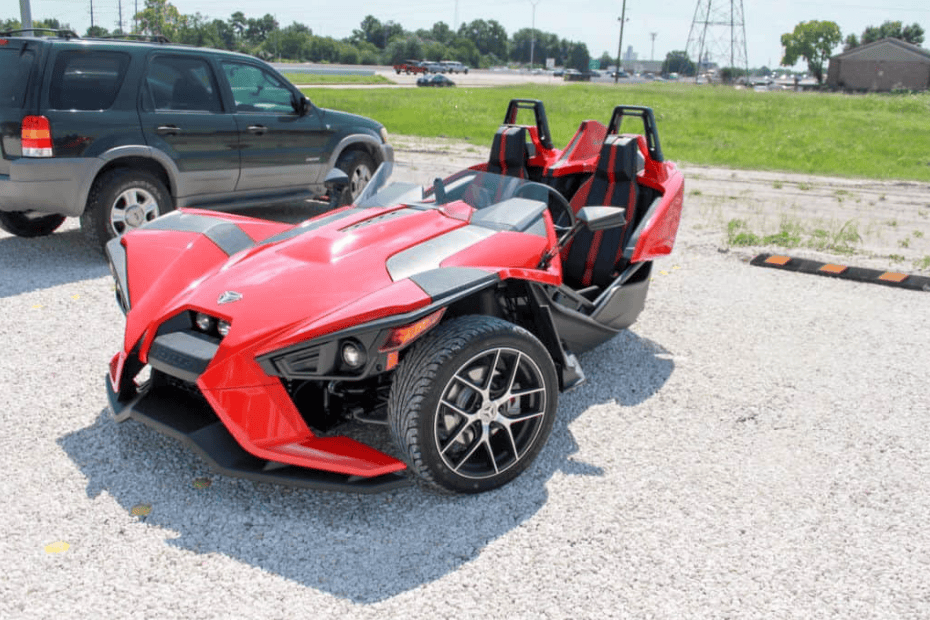
Permeable pavers are the superior alternative when it comes to motorcycle parking design, no matter which material you’re comparing it to. Unlike traditional materials, permeable pavers allow water to permeate through the surface which reduces runoff and minimizes the risk of standing water. This eliminates puddles, which can be hazardous for bikers, and helps mitigate flooding and erosion, which makes them super ideal for areas prone to heavy rainfall.
Plus, you simply can’t beat the durability of permeable pavers. Engineered to withstand huge loads and constant traffic, permeable pavers can maintain their structural integrity for a long time which reduces the need for costly repairs and replacements. This durability ensures a long-lasting solution for bike parking lots and provides peace of mind for parking lot owners.
In addition to their functional benefits, permeable pavers also boast environmental advantages. By allowing rainwater to permeate the ground, permeable pavers help recharge groundwater supplies and reduce the strain on stormwater management systems. Furthermore, their porous nature promotes natural filtration by removing pollutants and contaminants from runoff before it reaches waterways.
Motorcycle Park Design Guidelines for Installing Permeable Pavers
Designing a parking lot just got a whole lot simpler with permeable pavers. Here are some guidelines you should keep in mind when designing your bike parking lot:
Surface Preparation
If you want to successfully install permeable pavers in your bike parking lot, you must carefully prepare the surface. Ensuring a level surface and adequate compaction guarantees stability and longevity.
Permeable Paver Options
Remember to select pavers with the appropriate size, shape, and load-bearing capacity. This is essential if you want to serve various types of bikes and traffic volumes.
Proper Drainage Systems
Integrating efficient drainage systems into the design prevents water accumulation and ensures optimal performance. If you strategically place your drains and permeable surfaces, you can facilitate water flow to reduce the risk of flooding and erosion.
Maintenance Requirements
While permeable pavers require less maintenance than traditional materials, they do require some. Regular maintenance, including debris removal and surface cleaning, can preserve your parking lot for years to come.
Upgrade Your Motorcycle Park Design with TRUEGRID®
Designing a motorcycle parking lot design goes beyond aesthetics. It’s about prioritizing safety, accessibility, and sustainability. By addressing common issues and embracing innovative solutions like permeable pavers, you can create a bike park design that people will absolutely love.
Transform your motorcycle parking lot into a safe, sustainable space with TRUEGRID® permeable pavers. Engineered for durability, safety, and environmental responsibility, TRUEGRID® offers a solution that exceeds traditional paving methods.
Contact our team today and take the first step towards enhancing your motorcycle parking lot!
Are you searching for driveway materials for New England Homes? Perhaps something that can stand up against the harsh and demanding climate? We understand.
Selecting the best material for your driveway can significantly impact the driveways longevity and functionality, and you want your driveway to last as long as possible.
That’s why we created this comprehensive guide with everything you need to know to find the best driveway material for New England climates—and how to pick a driveway material that can endure it.
The New England Climate
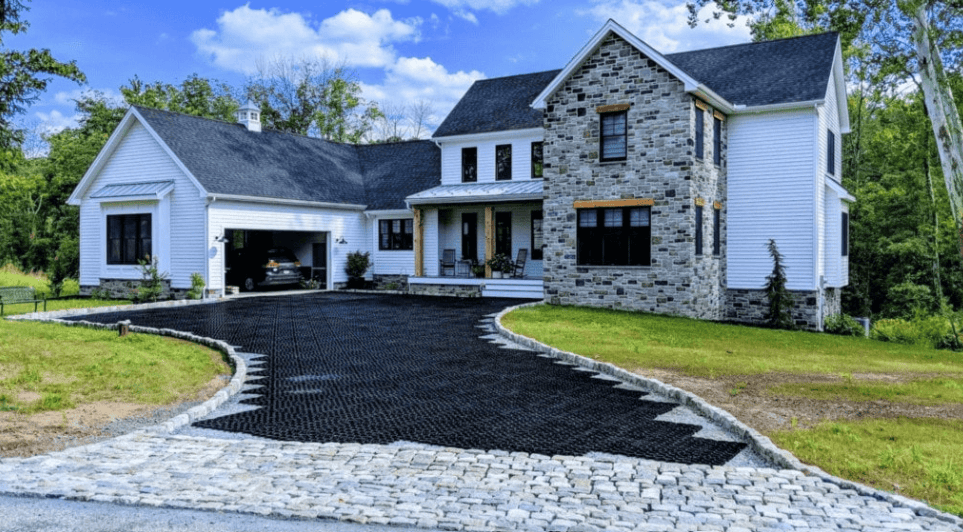
New England’s climate poses unique challenges because of heavy snowfall in the winter, lots of rain during spring and fall, and occasional scorching heat waves in summer. These conditions not only test the resilience of your driveway, they also present potential safety hazards.
The frequent wetness and drastic temperature fluctuations throughout the year demand a driveway material that can withstand a high level of intensity. It’s not just about enduring super cold or super hot weather. If you’re looking for the best driveway for material for New England, it has to endure both, plus everything in between.
The Challenges for Driveway Materials in New England
The weather conditions in New England stress most normal driveway materials beyond their limits. Freeze-thaw cycles can wreak havoc on surfaces that can cause them to crack and crumble. Plus, water drainage issues can lead to pooling and, subsequently, ice patches that pose risks to both pedestrians and vehicles.
Beyond that, heat expansion during the rare but intense summer heat waves can further stress your driveway materials that leads to deformation and a shortened lifespan. These challenges demand a material that is durable, flexible, and efficient. Fortunately, there is a viable option on the market.
Exploring The Best Driveway Materials for New England
Before we get to which material is right for your New England driveway, let’s discuss the most common material options available today:
1. Concrete
While concrete is a popular option for its clean look and durability, it doesn’t fare well against New England’s climate. It’s prone to cracking during freeze-thaw cycles and can be damaged by de-icing salts and chemicals, which are often necessary during snowy months.
2. Asphalt
Asphalt may seem like a viable option due to its flexibility and heat-conducting color, which helps melt snow faster. However, it requires regular maintenance to prevent cracks and potholes, especially after winter. The heat absorption quality of asphalt can also make it soft in extreme heat, which leads to deformation.
3. Gravel and Stone
Gravel and stone driveways offer better drainage but can become displaced easily, which requires frequent topping up and maintenance. They also don’t provide a smooth surface, which can be a challenge for snow removal and accessibility. For these reason, gravel is not the best driveway material for New England.
4. Permeable Pavers
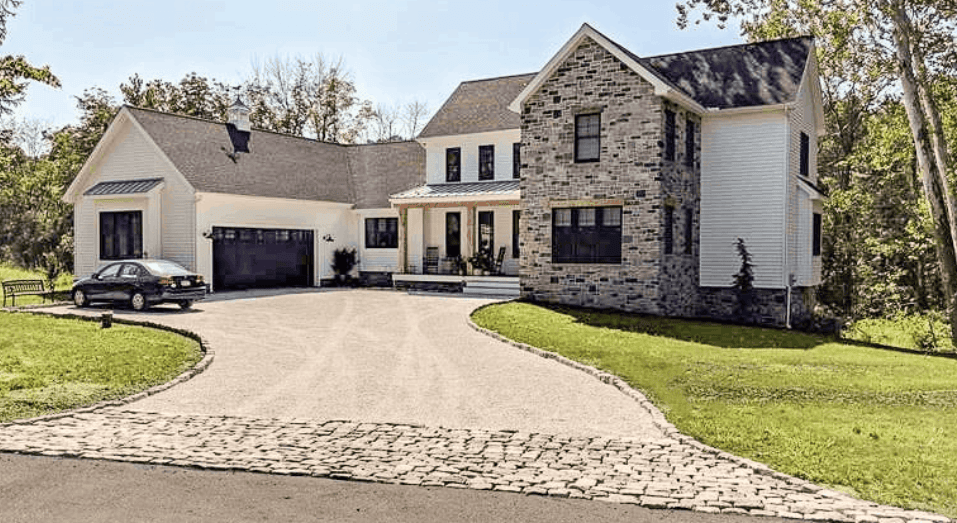
Permeable pavers—arguably the best driveway material for New England homes—are an ideal material option for managing the diverse weather conditions.
They allow water to permeate through their structure to significantly reduce runoff, and by minimizing the risk of water pooling and freezing, they address one of the cold season’s most significant hazards. They’re also more durable than the above options without all the maintenance.
Of course, the benefits don’t top there!
The Benefits of Permeable Pavers from TRUEGRID®
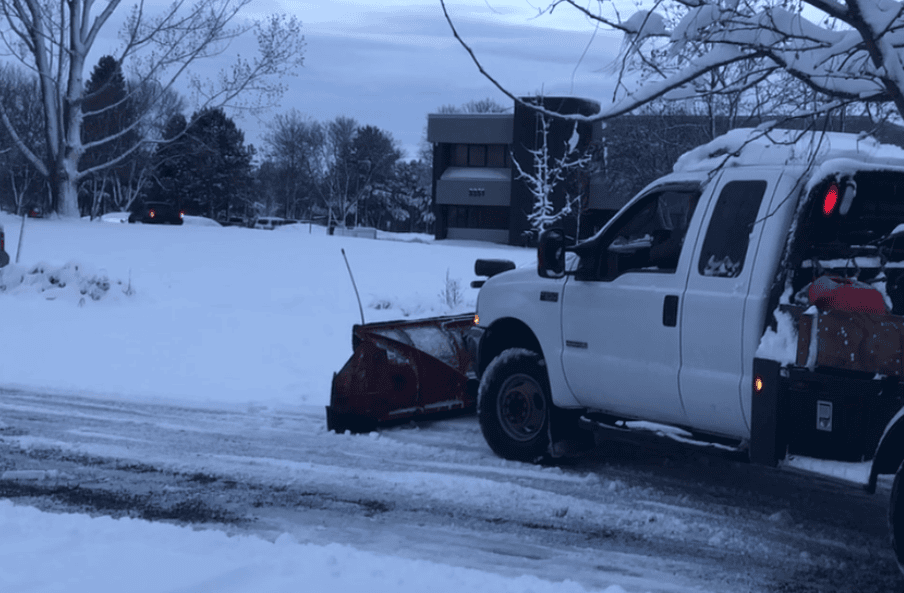
Permeable pavers are an ideal solution and the best driveway material for New England for many reasons. Let’s take a closer look at each of them:
Durability
Durability is super important, especially when it comes to the severe climate associated with New England. TRUEGRID® permeable pavers are engineered to withstand severe weather conditions. Made from 100% post consumer recycled HDPE plastic, TRUEGRID has a temperature service range from -58F to 198F, perfect for the New England climate.
Their resistance to freeze-thaw cycles prevents them from cracking and crumbling so that they will maintain their integrity over time.
The effective drainage design of permeable pavers eliminates water accumulation, which reduces the risk of ice formation. Plus, they are UV-stable to ensure that their appearance is perfectly preserved, even with prolonged exposure to sunlight. This combination of features guarantees a safer, more reliable surface across all seasons.
Maintenance and Longevity
The low maintenance requirements of TRUEGRID® permeable pavers make them a perfect choice for any driveway. Unlike traditional materials that often need frequent repairs, TRUEGRID® pavers are built to last. Their durability significantly reduces the need for costly maintenance activities.
Ease of Installation
Permeable pavers are easy to install, especially compared to more traditional materials. This straightforward installation process speeds up project completion and reduces labor costs to save money in the long run. Plus, they completely eliminate the need for complex drainage systems.
Affordability
Over time, the cost-effectiveness of permeable pavers is undeniable. Their long-term durability and minimal maintenance requirements lead to significant savings, which makes them a wise investment for any New England driveway.
Environmental Impact
One of the most compelling advantages of TRUEGRID® permeable pavers is their positive environmental impact. By facilitating natural water drainage, they help recharge local groundwater supplies, a crucial factor in sustainable land development.
This natural infiltration process also filters out pollutants which leads to cleaner water entering our ecosystems. So, by choosing permeable pavers, you’re not only choosing a driveway material that is better for the New England climate, but also a driveway material that is better for the environment. This is perfect for any homeowner that has a commitment to creating a healthier planet.
Update Your Driveway with Permeable Paver Systems from TRUEGRID®

Permeable pavers are undoubtedly the best driveway material for New England, offering unmatched durability, efficiency, and aesthetics. If you’re looking for the best permeable pavers on the market, look no further than TRUEGRID®.
Our innovative paver systems are specifically designed to meet the challenges of New England’s climate by helping to ensure your driveway’s stability and longevity, no matter the weather conditions.
Contact us today to learn more!
Are you considering installing a milled asphalt driveway on your property but aren’t certain it’s the right choice for you? Choosing the right driveway material is incredibly important, so we recommend researching and learning as much as possible about the material you want before making a decision.
In this article, we’re going to discuss everything you need to know about milled asphalt driveways, including what they are, their advantages, disadvantages, and some alternatives that might be perfect for your home.
Let’s get started!
What are Milled Asphalt Driveways?
Milled asphalt driveways, sometimes called asphalt millings driveways, are created from recycled asphalt pavement. The process involves grinding down existing asphalt into a fine material that can be relaid and compacted to create a new driveway. It’s a way to reuse old materials, which makes it an environmentally conscious choice.
Essentially, the benefits of milled asphalt driveways all come down to recycling, affordability, and quick installation, but they also have some pretty significant drawbacks.
The Pros and Cons of Milled Asphalt Driveways
When considering an asphalt milling driveway, it’s essential to weigh the advantages and disadvantages in order to decide whether it’s right for you.
The Pros of Milled Asphalt Driveways
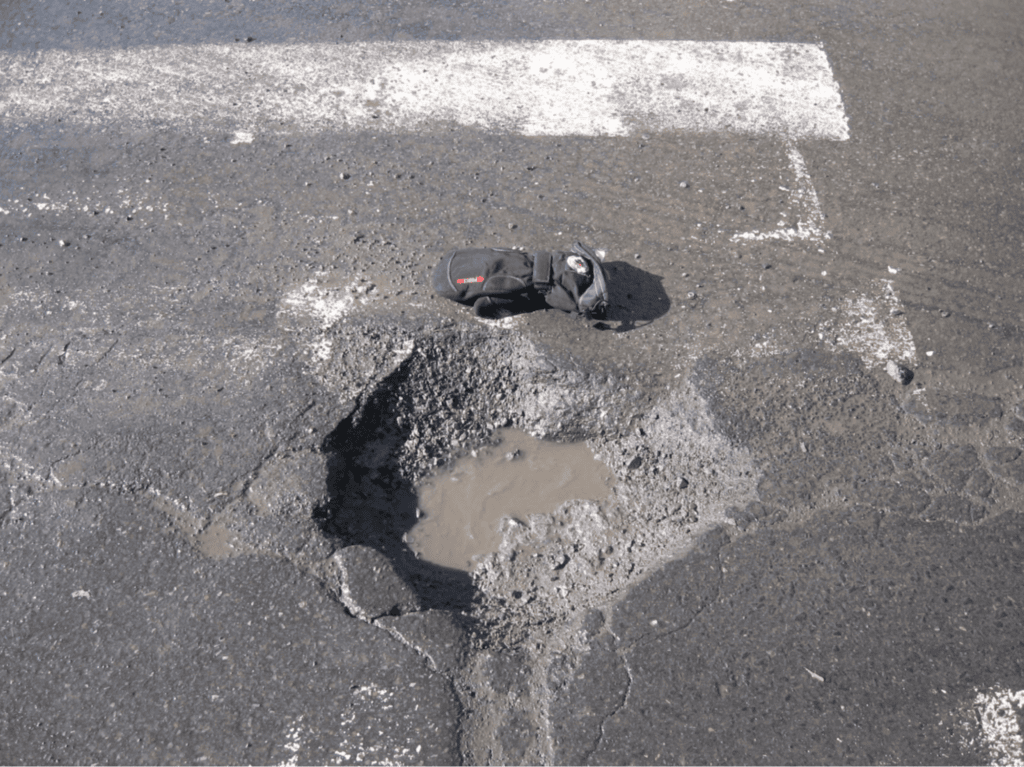
There are a few reasons why you might want to consider a milled asphalt driveway for your home or commercial property, including:
- Cost-Effectiveness: The cost of an asphalt milling driveway is significantly lower than a new asphalt or concrete driveway. Affordability makes it an attractive option for anyone on a budget.
- Quick Installation: Milling asphalt driveways can be laid and compacted quickly to minimize installation fees and ultimately save money.
- Recyclability: Choosing asphalt millings for your driveway is eco-friendly because they repurpose old asphalt which reduces waste and the demand for new materials.
The Cons of Milled Asphalt Driveways

Of course the benefits are appealing, but there are several downsides you should consider. Here are some distinct disadvantages of milled asphalt driveways:
- Durability Issues: Milled asphalt driveways may not last as long as their newer counterparts. They can be prone to normal wear and tear, which requires more frequent repairs or replacement sooner than expected.
- Maintenance Requirements: Asphalt millings driveway maintenance is crucial to extend its lifespan. Regular sealing is necessary to keep it in good condition, which adds to the overall cost of the material.
- Environmental Concerns: Although recycling asphalt is beneficial, the process still involves petroleum-based products, which can contribute to pollution and environmental issues.
- Limited Versatility: Milled asphalt offers very few customization options in color and texture. This limitation might not suit property owners looking for unique driveway aesthetics.
- Design Aesthetics: The look of a milled asphalt driveway is distinctly different from other materials. It lacks the polished finish of new asphalt or the natural appeal of alternative options like permeable pavers, which could reduce your property’s curb appeal.
A Better Solution: Permeable Pavers

Permeable pavers are a sustainable and innovative solution that doesn’t have the same limitations as milled asphalt driveways. Their unique construction allows water to pass through to address common issues associated with non-permeable surfaces.
Here are seven unique benefits of permeable pavers and why you should consider them over milled asphalt for your driveway.
1. Environmental Impact
Permeable pavers drastically reduce runoff which allows water to filter through and diminish pollutants before they reach natural bodies of water. This process cleans the water and reduces the risk of flooding in order to contribute to a healthier and safer ecosystem.
2. Durability
Permeable pavers are engineered to withstand heavy loads, which makes them a perfect option for high-traffic areas. This strength translates into fewer repairs and replacements and much less maintenance to help ensure that your investment lasts years.
3. Low Maintenance

In contrast to milled asphalt, which requires periodic sealing and repairs, permeable pavers are super low maintenance and require low upkeep. Their design naturally resists common driveway issues, such as cracks, potholes, and erosion to save both time and money on maintenance.
4. Aesthetic Flexibility
The variety of colors, shapes, and patterns available with permeable pavers allows for complete customization and personalization. This design flexibility ensures that you can design your driveway or pathway to complement the surrounding architecture and landscape design.
5. Temperature Control
Permeable pavers reflect sunlight and allow water to evaporate through their surface, which helps reduce surface temperatures. This unique and valuable feature is particularly beneficial in urban areas where heat buildup can be a significant problem.
6. Water Management
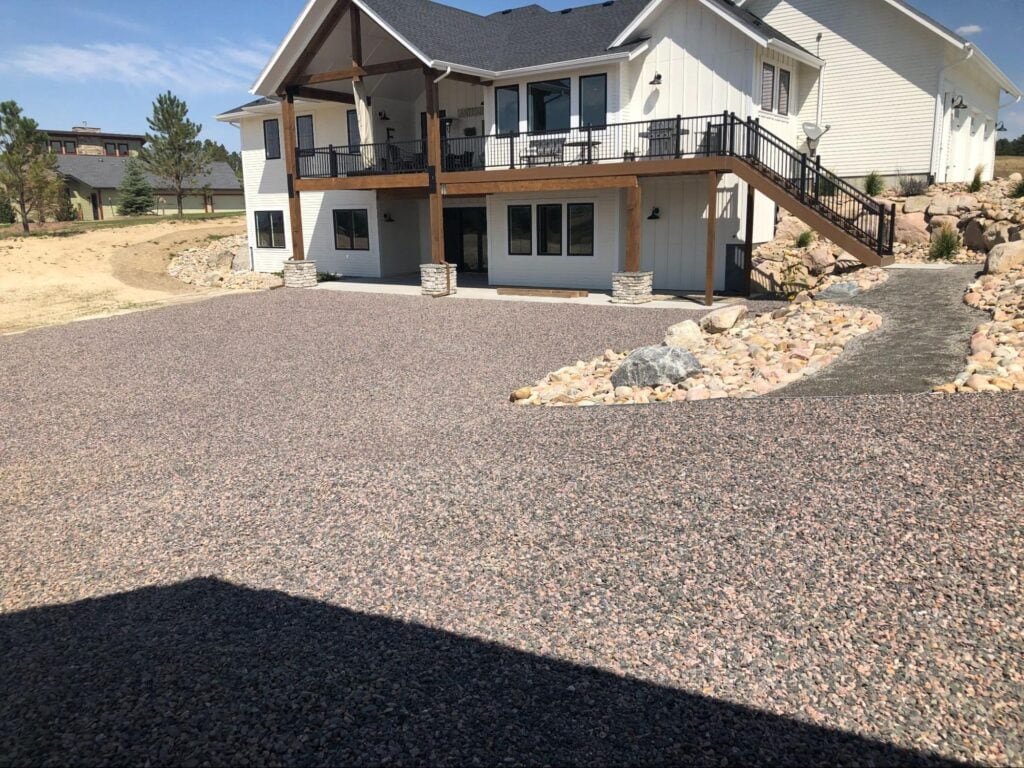
By effectively managing rainwater onsite, permeable pavers prevent flooding and erosion to help protect your property and the environment. Efficient water management also mitigates the burden on municipal stormwater systems, which is a positive for everyone in your area.
7. Long-Term Investment
Although the initial cost of permeable pavers may be higher than traditional paving materials, their durability and low maintenance requirements provide significant savings over time. This makes permeable pavers a wise investment for your wallet, your property, and the planet.
Elevate Your Driveway with Permeable Pavers from TRUEGRID®
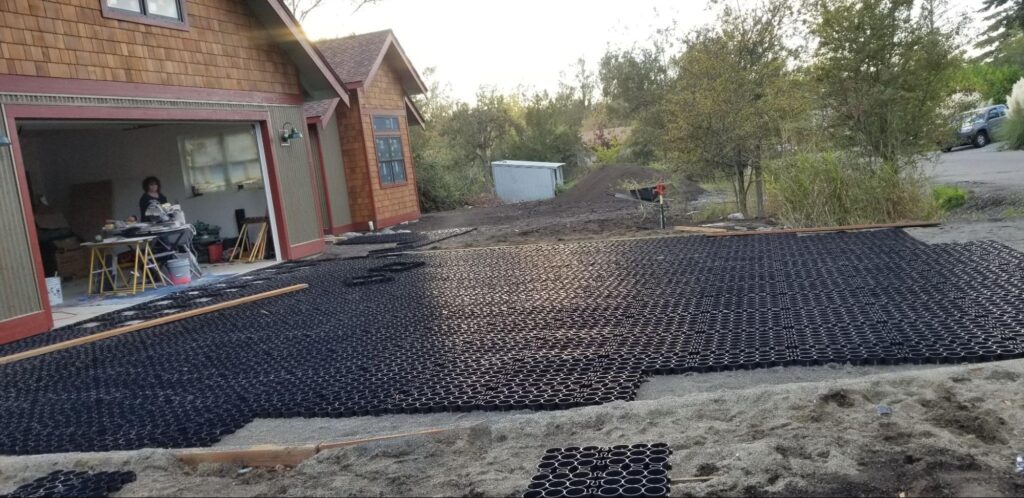
While milled asphalt driveways offer certain benefits, permeable pavers from TRUEGRID® provide a more sustainable, durable, and aesthetically pleasing solution without any of the drawbacks. By opting for our permeable pavers, you’re investing in the future of your property and the planet.
Visit TRUEGRID® today to learn more, or fill out this form to request an estimate!
Are you thinking about RV driveway ideas but don’t know how to get started? If so, you’ve come to the right place! Whether you’re a homeowner looking for a safe and fun way to store your RV or a commercial owner managing RV lots, the right driveway design can make a huge difference.
That’s why we created this article exploring innovative and sustainable solutions to transform your RV parking space.
Let’s dive into the world of RV driveway ideas that are as practical as they are unique and beautiful.
8 Unique RV Parking Driveway Design Ideas
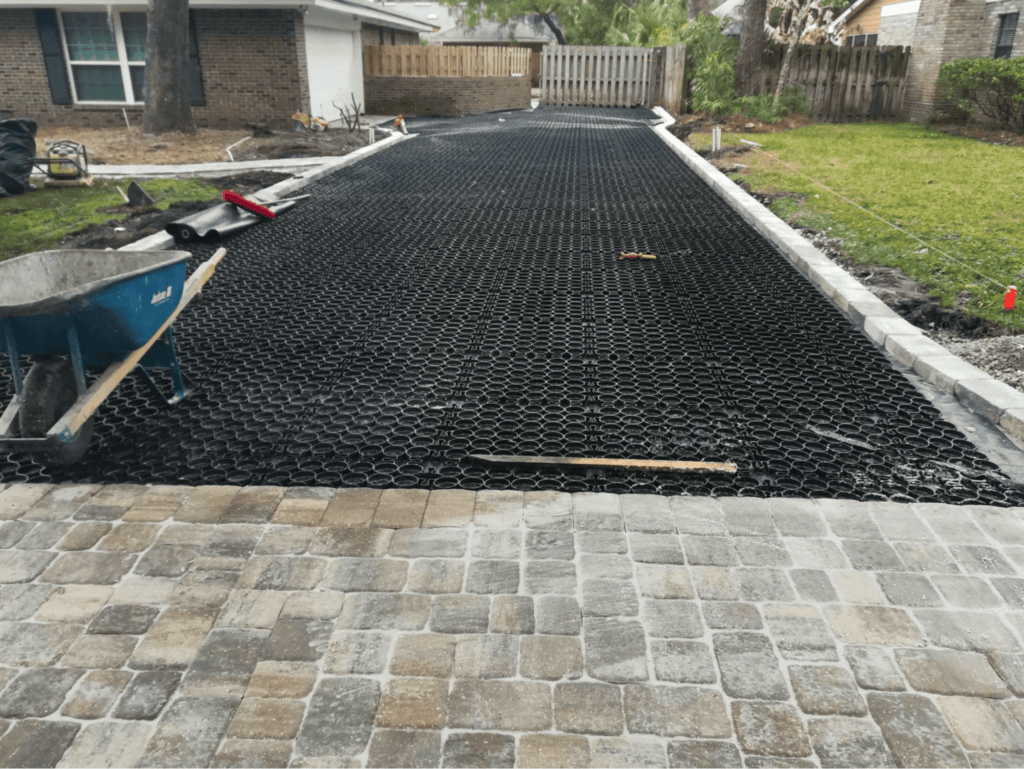
There are many ways to reinvent your RV driveway or park, but here are eight of our favorite ideas, including everything from smart technology to permeable pavers and everything in between. Let’s dive in!
1. Solar Pavers
Imagine an driveway that not only supports your RV but also powers it. Solar pavers are a groundbreaking RV driveway idea that integrates solar panels within the paving stones. This design is perfect for RV owners looking to harness renewable energy because it can help reduce electricity costs while also promoting an eco-friendly parking solution.
2. Geometric Paver Design
Bring a touch of elegance and style to your RV driveway with geometric paver designs. Using these for RV driveway ideas essentially involves creating intricate patterns and shapes to create a custom look that stands out. The options are almost limitless:
- Herringbone Pattern
- Checkered Pattern
- Running Bond Pattern
- Basketweave Pattern
- Circular Patterns
- Alternating Permeable Pavers
- And More!
3. Glow in the Dark Pathways
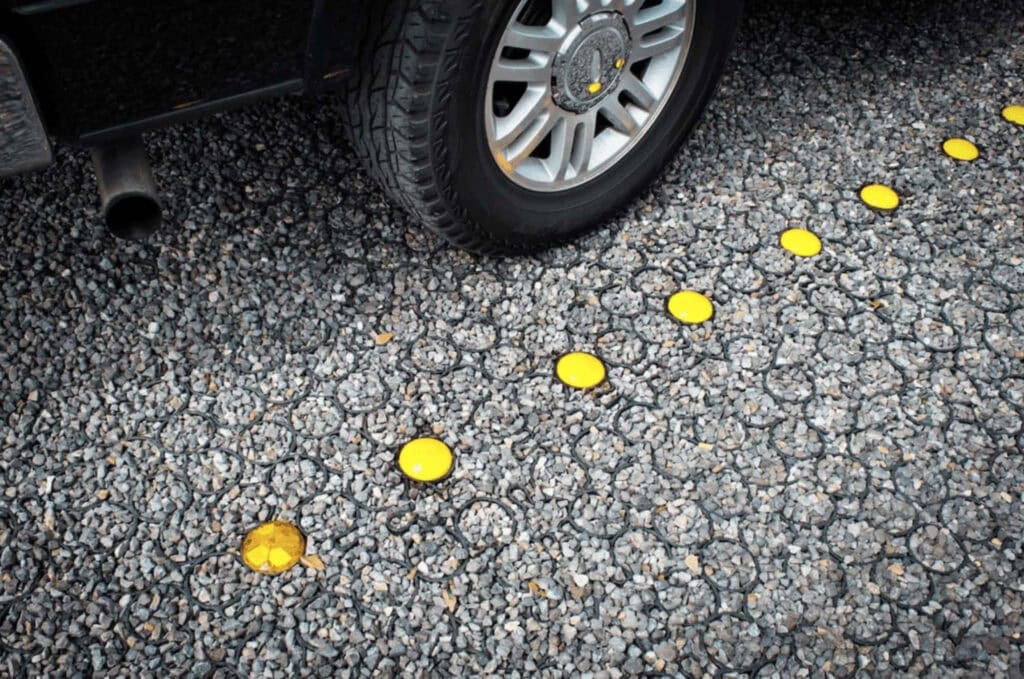
Enhance the safety and visibility of your RV driveway with glow-in-the-dark pathways. These innovative pavers absorb sunlight during the day and emit a soft glow at night, which is perfect for getting around after dark. This idea works for both residential and commercial RV lots.
4. Rainwater Harvesting
Incorporate a rainwater harvesting system beneath your RV driveway. This eco-friendly solution collects rainwater through permeable pavers, which can be used for either landscaping or cleaning purposes. It’s an efficient way to manage water resources and reduce your environmental footprint, which is why they also make wonderful rv driveway ideas.
5. Heated Driveway
With a heated driveway system, you no longer have to worry about shoveling snow or buying deicing chemicals, which can be super harmful to your driveway. Fortunately, most radiant heating systems can be installed beneath your driveway flooring, so it doesn’t have to dictate your RV driveway design.
6. Elevated Decks
Elevated decks offer a multifunctional space for RV parking. They provide additional storage and recreational space to create a porch or patio area just outside your RV. It’s an ideal RV driveway idea for maximizing space in residential areas or offering premium parking options in commercial lots.
7. Smart Technology
Integrating smart technology into RV driveway parking is always useful.
You can use the smart technology for the convenience of parking or the security of the area. There’s a ton of smart technology that you can include in your RV driveway, including automatic lighting, security cameras, motion sensors, and more!
8. Permeable Pavers

Permeable pavers make excellent RV driveway ideas! They are essential for any RV driveway or RV lot because they prevent water accumulation to reduce the risk of flooding and help manage stormwater sustainably.
By choosing permeable solutions, you’re investing in the longevity of your driveway and the health of the surrounding ecosystem. Plus, they’re incredibly durable, long-lasting, and aesthetically pleasing.
Some permeable pavers, like plastic grid pavers, are sought after by DIYers for their ease of installation, where specialty equipment and materials are not usually required.
Bonus Commercial RV Park Design Ideas

When designing your commercial RV park, you should definitely consider adding innovative and sustainable elements to set your property apart. Here are a few commercial RV lot design ideas to inspire your next project:
Recreation Areas
Enhance your guest experience with outdoor fitness equipment, hiking trails, and communal spaces for activities like gathering around campfires, game nights, and outdoor movies.
Solar Lighting
Installing solar-powered lighting along pathways and communal areas can help you highlight your landscaping, increase safety, reduce costs, and minimize your overall environmental impact.
Native Landscaping
Use native plants to make your park look stunning and support local ecosystems. As a bonus, native plants require less maintenance while also providing habitats for wildlife and promoting biodiversity.
Drive-Thru Service Areas
Offer convenient services like quick check-ins, waste disposal, and water refilling stations through efficient drive-thru areas. This can help you boost guest satisfaction and park efficiency.
Permeable Pavers
Install permeable pavers for parking, walkways, and patios to allow rainwater infiltration which reduces runoff and can enhance the aesthetic appeal of your RV park with eco-friendly materials.
Get Permeable Pavers for Your RV Driveway Today
Transforming your RV driveway or RV park into a sustainable, functional, and attractive space is just within reach. All you need is to partner with a well-known industry leader who offers top-of-the-line permeable paver systems – and that’s where TRUEGRID® comes in!
Whether you’re a homeowner looking to enhance your property or a commercial lot manager aiming to attract more visitors, our permeable paver systems could help revolutionize your RV parking spaces.
Get an estimate for your project today!
Have you ever wondered why some areas flood more than others, even after a small bit of rain? The answer might lie right beneath your feet – impervious surfaces. Many people have impervious surfaces on their property and they don’t even know it, but what if there’s a way to mitigate this issue?
We’re here to tell you there is a way, but before we talk about possible solutions, let’s take a moment to discuss what impervious surfaces are and how they can affect your property.
What is an Impervious Surface?

Simply put, an impervious surface is any material that prevents water from seeping into the ground. Common examples include asphalt, concrete, and even some types of compacted soil. These surfaces are common in urban development, but come with a hefty price for the environment and property owners.
The main issue with impervious surfaces is their role in altering natural water cycles. When the water hits an impervious surface, it can’t get through to reabsorb into the earth. This leads to increased runoff, which can cause flooding, erosion, and pollution in nearby waterways. Over time, it can have devastating effects on your property and the local ecosystem.
The Downsides of Impervious Surfaces

Impervious surfaces are common because they’re less expensive and require less maintenance than other hard surfaces. While impervious surfaces might seem like a necessary evil, their drawbacks cannot be ignored:
Increased Runoff
Impervious surfaces prevent water from soaking into the ground, which can lead to excessive runoff during heavy rains. The excess water can overwhelm drainage systems and cause urban flooding and disrupted ecosystems.
Pollution
Runoff collects pollutants from impervious surfaces, such as oil and heavy metals, and carries them into rivers, lakes, and oceans. This pollution can harm aquatic life and contaminate water sources, which makes them unsafe for consumption and recreation.
Heat Island Effect
Impervious materials like asphalt and concrete absorb and retain more heat than natural landscapes. This leads to higher temperatures, increased energy consumption for cooling, and more air pollution.
Water Quality
The quality of water declines as runoff causes more erosion, which leads to sedimentation that negatively impacts water habitats. Increased pollutants in the water can also negatively impact water quality.
Drainage Issues
The excess runoff from impervious surfaces can put a strain on local water systems. This can cause sewage treatment plants to overflow and pour untreated sewage into natural water bodies.
What is a Permeable Surface?
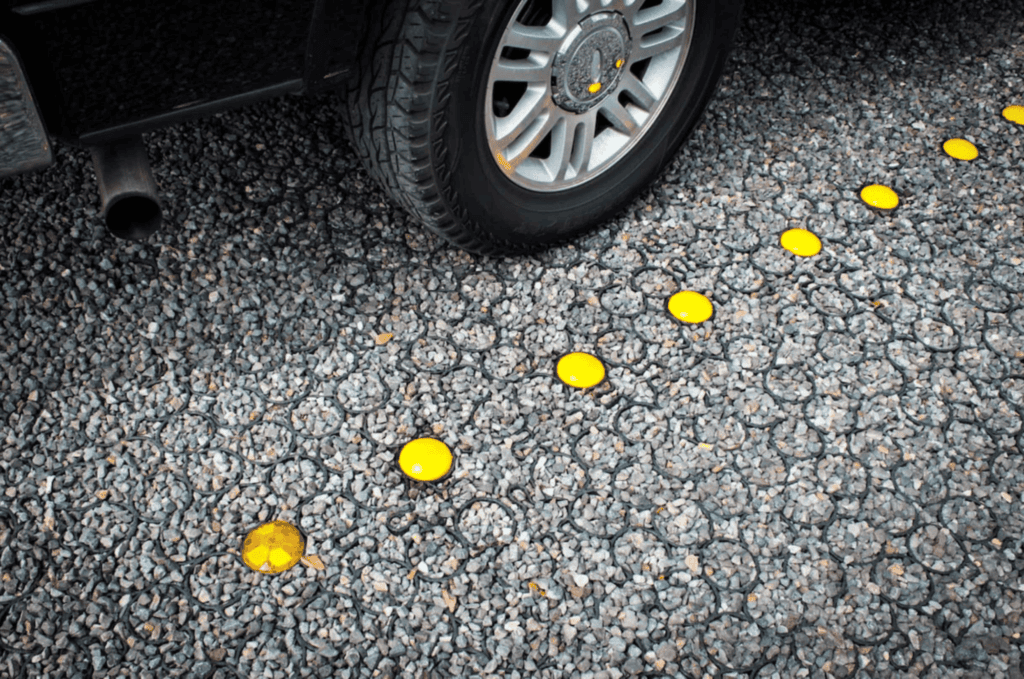
On the flip side, pervious surfaces allow water to pass through which reduces runoff and recharges groundwater supplies. They are an integral part of sustainable landscaping that helps to mitigate the issues caused by their impervious counterparts.
Permeable pavers are a fantastic example of pervious surfaces. They’re designed to let water soak through to help reduce runoff and pollution. TRUEGRID® is a leading provider of permeable pavers, with a range of products that are both functional and aesthetically pleasing.
6 Innovative Ways to Reduce Impervious Surfaces

If you want to learn how to reduce impervious surfaces and the damages they can create, you need to think outside the box.
Here are 6 effective strategies that you can use to reduce your impervious surfaces:
1. Permeable Pavers
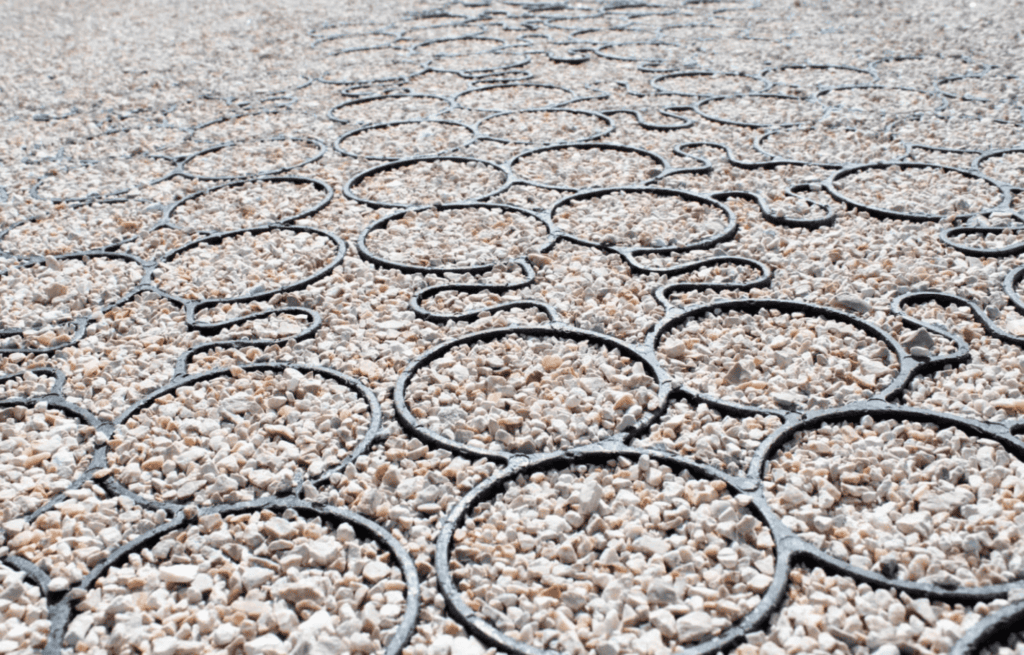
Permeable pavers merge the functional need of traditional paving with eco-friendly features by offering an innovative solution that reduces runoff and promotes groundwater recharge.
Their design allows rainwater to filter through which reduces the impact on municipal drainage systems and lowers flood risks.
TRUEGRID® leads the innovation in this space by providing durable and sustainable pavers for residential and commercial settings. Our crafted products are crafted from recycled materials and boast heightened durability, low maintenance requirements, and environmental benefits
2. Green Roofs
Creating a green roof is essentially transforming your roof into a green oasis by covering it in plants that will look beautiful and absorb rainwater. This innovative approach helps insulate your home, reduce water runoff, and combat the urban heat island effect.
3. Rain Gardens
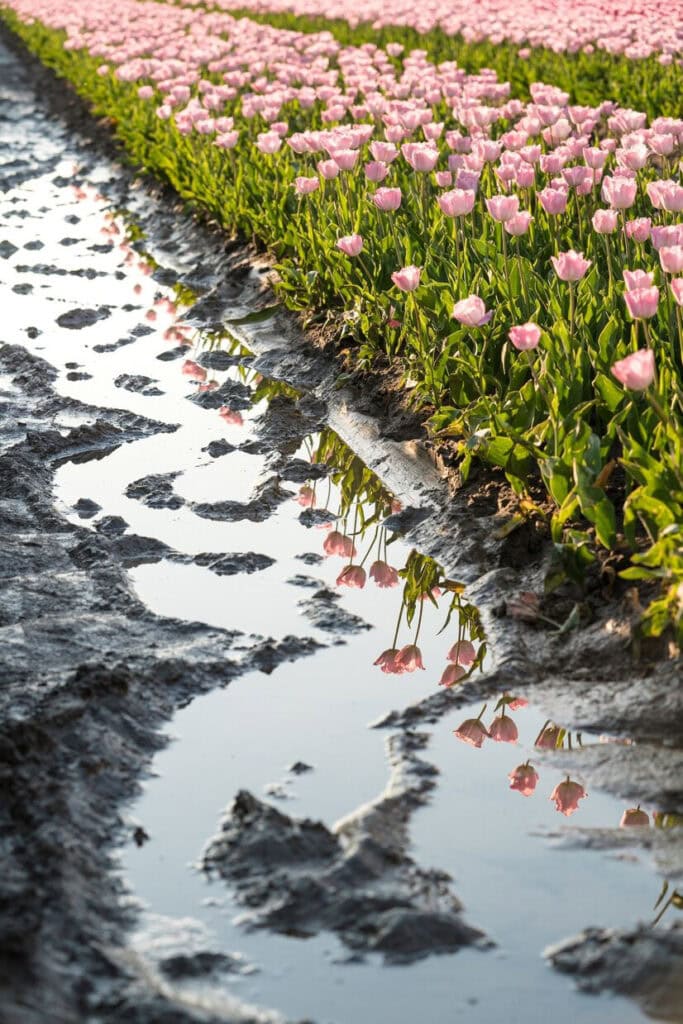
Rain gardens are designed to collect runoff from roofs, driveways, and other surfaces. By planting them with native shrubs, perennials, and flowers, you can create a natural filter for runoff that enhances your property’s aesthetics and reduces the impact that impervious surfaces have on your local environment.
4. Redirect Downspouts
Instead of allowing downspouts to discharge water directly onto hard surfaces, redirect them toward your garden or rain barrels. This simple change can simultaneously reduce runoff and water your plants.
5. Plant Some Trees

Trees are nature’s way of managing water. Their roots absorb and store large amounts of rainwater, which reduces runoff and erosion. Plus, they offer the added benefits of shade and beauty. To reduce impervious surfaces on your property, plant some trees!
6. Use Mulch

Mulching your garden beds retains moisture for your plants and allows water to infiltrate the soil more effectively. This simple strategy can significantly reduce the amount of runoff from your property and reduce the impact that impervious surfaces are having on your local environment.
Reduce Reduce Impervious Surfaces and Potential Water Damage with Permeable Pavers from TRUEGRID®
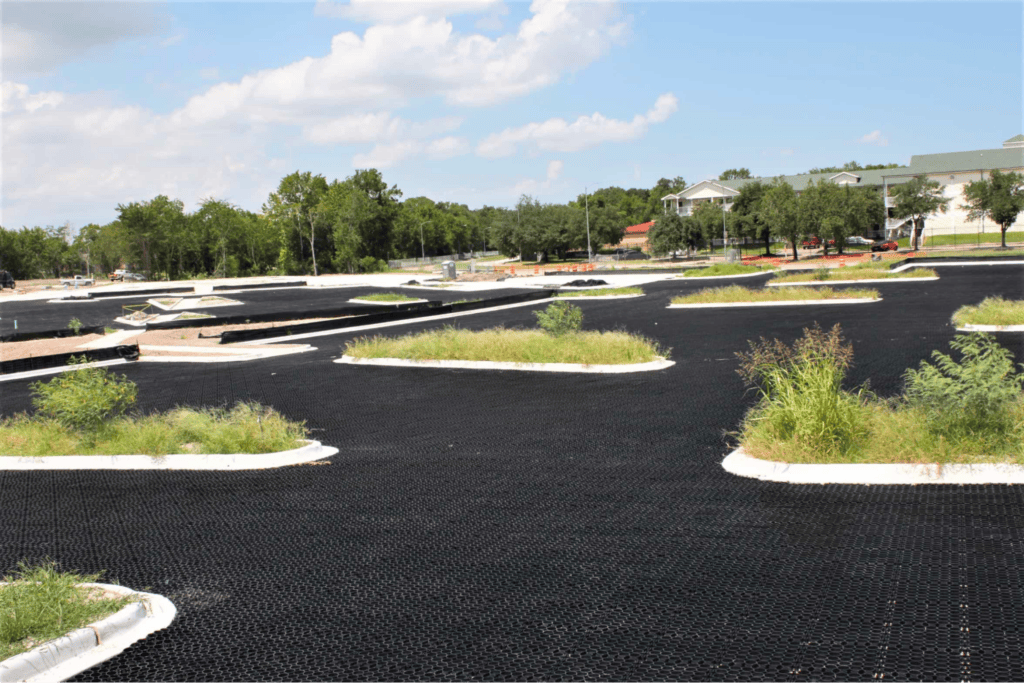
As we’ve explored, reducing impervious surfaces is crucial for managing water sustainably and protecting our properties and local water sources from damage and contamination. TRUEGRID® provides a practical and aesthetically pleasing way to achieve this with our wide selection of permeable pavers.
Ready to make a change? Get an estimate for your property today!

